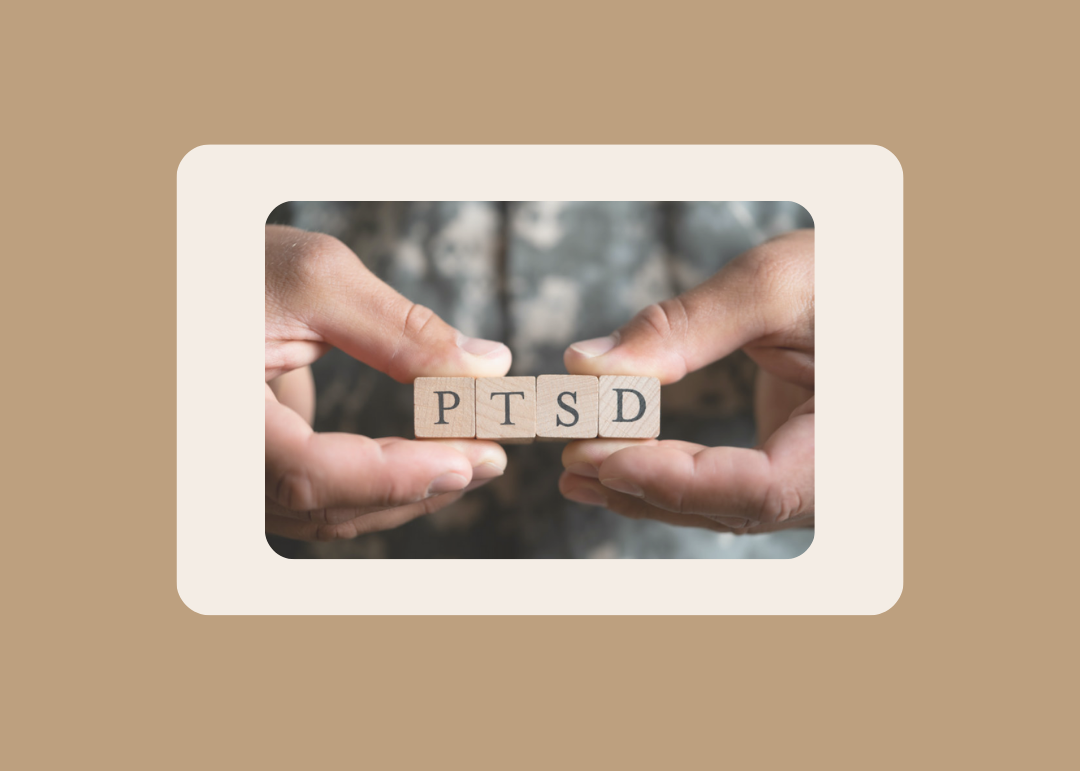Understanding PTSD: How Nervous System Regulation Can Support True Healing
When most people hear the term PTSD, their mind instantly jumps to war veterans or first responders. And while military and law enforcement communities do carry a significant burden of trauma, PTSD — or Post-Traumatic Stress Disorder — isn’t exclusive to those in uniform.
Truthfully, trauma wears many faces: childhood wounds, car accidents, medical trauma, birthing experiences, abusive relationships, loss of loved ones, or even years of chronic emotional stress.
For many, PTSD isn't always one dramatic event—it can be the accumulation of smaller, unresolved stressors that overload the system until it simply can’t adapt anymore.
But here’s the part that often gets missed: PTSD lives in the nervous system. And that's where real, lasting healing begins.
PTSD Is a Nervous System Injury, Not Just a Mental Health Diagnosis
While conventional medicine largely categorizes PTSD as a psychological condition, the emerging science of trauma is showing us something deeper.
PTSD is actually rooted in how the autonomic nervous system (ANS) — the body’s survival wiring — responds to overwhelming events.
The brain and body are designed to handle stress through activation and resolution. You face a threat, your system responds (fight, flight, or freeze), and once the danger passes, the body should return to balance.
But in PTSD, that resolution doesn’t occur fully. Instead, the nervous system stays stuck — trapped in hypervigilance, anxiety, or shutdown.
This creates an ongoing loop of dysregulation where:
- The body constantly scans for danger, even when safe
- Sleep disturbances, flashbacks, and emotional triggers persist
- Energy levels plummet
- The immune, hormonal, and digestive systems often suffer
- Everyday situations feel overwhelming
Trauma isn’t just a memory in your head — it’s a pattern your nervous system hasn’t yet been able to integrate.
The Science Behind a Stuck System
Multiple brain regions are involved in the PTSD response:
- Amygdala: Your brain’s fear center, which becomes hyperactive.
- Hippocampus: Involved in memory processing; often under-functioning, making it hard to distinguish between past and present.
- Prefrontal Cortex: The rational, executive brain which loses its ability to regulate emotions during high stress.
When trauma imprints into the nervous system, the survival centers override the areas responsible for calm, logic, and presence. This leads to what researchers call neuroception: the body perceiving danger even when none exists externally.
One study published in JAMA Psychiatry found that PTSD patients have distinct changes in brain structure and function, particularly reduced hippocampal volume and hyperactive amygdala responses.
Another study demonstrated that autonomic regulation (via HRV — heart rate variability) is significantly impaired in those with PTSD, further validating that this is more than just “psychological.”
The Wide Spectrum of PTSD (It’s Not Always Obvious)
Here’s what many people don’t realize: You can have trauma-patterned physiology even without a PTSD diagnosis.
- Childhood neglect or emotional invalidation
- Medical or surgical trauma
- Birth trauma (both for baby and mother)
- Toxic relationships or emotional abuse
- Accidents or injuries
- Years of chronic stress and caregiving
When the system is overwhelmed repeatedly or severely, it begins to store that unresolved tension, leading to patterns of anxiety, panic, exhaustion, chronic pain, hyper-sensitivity, or emotional numbness.
In our practice, we often say: The body keeps the score. (Yes — borrowing from the brilliant book by Dr. Bessel van der Kolk.)
Nervous System Regulation: Where True Healing Begins
Here’s the hopeful news: The nervous system is highly adaptable.
Thanks to neuroplasticity — the brain and body’s ability to reorganize, create new neural pathways, and rewire old patterns — healing is always possible, no matter how long you’ve carried the weight.
Nervous system regulation isn’t about erasing the memory of trauma, but about changing the way your system responds to that memory.
It allows the body to feel safe again, to reprocess those stored survival patterns, and to step out of a state of chronic defense.
What Regulation Looks Like in Real Life:
- No longer feeling hijacked by emotional triggers
- Restful sleep without racing thoughts
- Reduced hypervigilance and panic
- Better digestion and immune resilience
- Feeling safe and grounded in your own body again
- The ability to be present with family, friends, and life
The Role of Neural Integration
This is why nervous system-based care, like Neural Integration, plays such a powerful role in healing PTSD and trauma patterns.
Rather than using force, medication, or purely cognitive techniques, neural integration works directly with the body’s stored patterns.
By applying gentle, specific contacts to the spine and system, this work helps:
- Increase vagal tone (more on that in our Viva Las Vagus blog)
- Downshift sympathetic fight-or-flight patterns
- Promote parasympathetic safety and repair
- Facilitate integration of previously stored stress responses
At REV Optimal Living, we’ve witnessed countless clients — including those with decades of military service, frontline work, and deeply rooted childhood trauma — reclaim balance, presence, and peace through this work.
Because again: trauma lives in the nervous system, and healing does too.
Supporting the Nervous System at Home
While nervous system care provides the foundation, healing also involves daily practices to create ongoing safety and regulation. Here are some tools that complement the healing process:
- Breathwork + Coherence Breathing: Slow, diaphragmatic breathing (in for 5-6 seconds, out for 5-6 seconds) directly activates the vagus nerve and signals safety to the brain. The Reset Lab, courtesy of Dr. Matt, is your go-to resource for coherence sessions and meditations!
- Body Scanning + Somatic Awareness: Gently noticing physical sensations helps reconnect awareness to areas where trauma may have been stored.
- Safe Relationships + Connection: Human connection — safe touch, eye contact, shared emotional safety — helps regulate the social nervous system.
- Nature, Grounding, and Sunlight: Being outdoors recalibrates circadian rhythms, grounds the biofield, and lowers cortisol levels.
- Targeted Nutrition: Magnesium (known for calming the nervous system), Omega-3 fatty acids (brain and cellular repair), B vitamins (support neurotransmitter balance).
- Trauma-Informed Movement: Gentle yoga, tai chi, or slow intentional movement allow the body to safely re-integrate stored tension without re-triggering.
The Cost of Avoiding vs. The Gift of Healing
Unintegrated trauma can cost us decades of vibrancy — not just emotionally, but physically. Research has shown strong links between unresolved PTSD and chronic illnesses including:
- Heart disease
- Autoimmune conditions
- Digestive disorders (IBS, Crohn’s)
- Chronic fatigue
- Neurodegenerative disorders (dementia, Alzheimer’s)
But on the flip side — integration can bring profound transformation. When the nervous system learns safety again, health improves across the board.
Because when you heal your nervous system, you’re not just healing trauma...You’re reclaiming your life.
Key Takeaway:
PTSD doesn’t have to be a life sentence. The brain and body are remarkably resilient when given the right tools and support. Healing isn’t about forgetting the past—it’s about no longer being controlled by it.
Whether you or a loved one are actively working through trauma or simply beginning to explore nervous system regulation, know this: Hope is very real. And healing is absolutely possible.
Dive Deeper:
Want to explore more topics on subconscious healing and holistic health? Check out our video resources and join our REV community online for more tools and practices that elevate your health and enhance your nervous system integration.
Phone: (423) 713 - 7390 / Schedule Online: click here
Disclaimer: This blog is meant for informational & entertainment purposes only, and should not be taken as medical advice. Please consult your healthcare practitioner before making any changes or if you have any questions regarding information provided.











